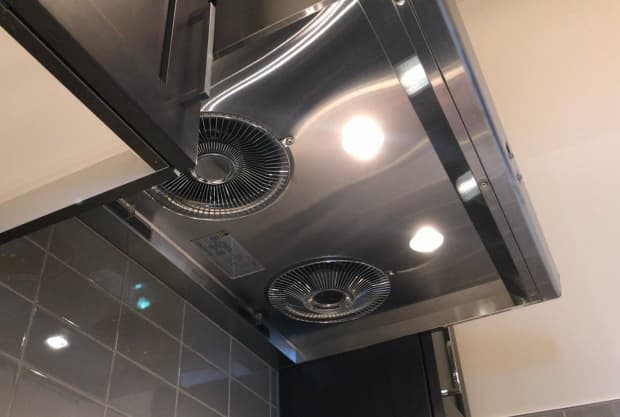Doctors, engineers call on Ontario to address airborne spread of COVID-19
Nearly three dozen engineers and doctors in Ontario are calling on the Health Ministry to better inform the public about the risks of airborne transmission of COVID-19, and improve ventilation standards across the province.
In a letter, 21 doctors and 12 engineers and other scientists call on Ontario to update the province's COVID-19 guidelines, regulations and communication to reflect the Public Health Agency of Canada's acknowledgement earlier this month that COVID-19 can indeed spread in microscopic droplets, or aerosols, that can travel beyond two metres.
We need our public health leaders and scientists to be explaining this. - Dr. Sarah Addleman
"I think the public generally believes that if you are inside, as long as you are separated more than two metres from other people, you don't need to have a mask on and you'd be pretty safe," said Dr. Jennifer McDonald, a rehabilitation doctor at The Ottawa Hospital, and one of the doctors who co-signed Tuesday's letter.
"When in reality, especially if you have multiple people in that house or in that room, depending on the ventilation of that room, it could get very dangerous."
McDonald conducted her own experiment at home with a carbon dioxide monitor, which can indicate how fresh the air is — generally, the lower the carbon dioxide level, the better the air quality.
Outdoor air normally has 400-500 parts per million of carbon dioxide. McDonald found the air inside her home had 1,100 and 1,300 parts per million. A school can be as high as 2,000, she said.

"The public is not aware of that, that you're literally stewing in stale air that could be building up these virus particles," she said.
By simply turning on the exhaust fan over her stove or opening a window, McDonald found she was able to improve her home's air quality within minutes.
Knowledge is power, says doctor
McDonald and the other signatories want to see better guidance for high-risk businesses like gyms and bars, and want the province to mandate and fund ventilation assessments at places like schools and long-term care homes, as well as promote the use of HEPA air filters.
They'd also like to see practical advice offered to the public about simple ways people can improve air quality at home, like replacing furnace filters and maintaining bathroom exhaust fans.
On Thursday, the Ministry of Health said in a statement to CBC that it provides resources for workplaces to protect against the spread of COVID-19 including guidance on installing Plexiglas barriers and improving (HVAC) systems to increase air flow.
"The most important advice is to wear a mask when physical distancing is a challenge or when it is required," the statement said.
"The vast majority of transmission of COVID-19 is by droplet spread between person-to-person. Transmission by small particles (aerosols) has been shown to possibly occur in closed crowded spaces with poor ventilation. There is no evidence at this time that the virus is able to transmit over long distances through the air e.g. through air ducts."

Dr. Sarah Addleman, an Ottawa emergency room physician who also signed the letter, said information about COVID-19 airborne transmission shouldn't be frightening, it should be empowering. While handwashing and physical distancing are important, proper ventilation can provide an added layer of protection indoors, she said.
"People just deserve to know the facts because then they can make decisions for themselves, whether they're comfortable having other people inside their home [or] going to indoor bars or restaurants," Addleman said.
Should people chose to host a small gathering indoors, they may decide to crack open a window, buy an air purifier or turn on a humidifier. Studies have shown COVID-19 prefers dry, cool air, she said.
"I never knew anything about ventilation until I started reading about it," said Addleman. "We need our public health leaders and scientists to be explaining this."


